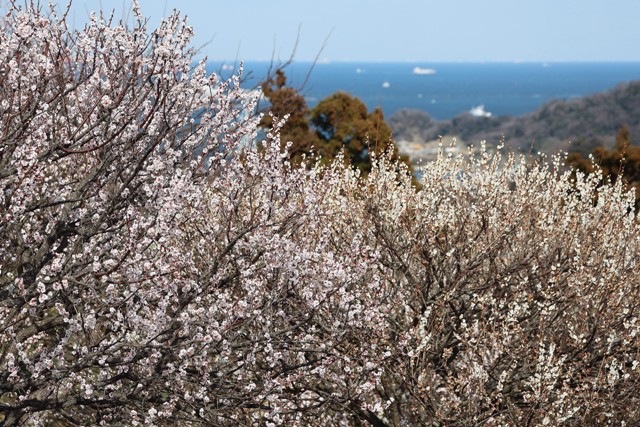 |
| Slope Car in the Taura Ume-no-sato (Taura Plum Village) |
When I visited Tauta Ume-no-sato (Taura Plum Village) in Yokosuka City last month, I came across a curious transportation means in the plum grove. It looked like a monorail or a funicular, but it was different from both of them. What was that?
The answer is Slope Car operated by Yokosuka City. It's a climbing vehicle that uses an electric motor with a rack-and-pinion driving system. Slope Car is classified as an elevator under the Building Standards Act, not a monorail under the Railway Business Act. The vehicle and the track were constructed by Kaho Monorail Company in Fukuoka Prefecture, Kyushu Island. You can see a similar transportation system in Asukayama Park, Mt. Sarakura, Manna Country Club, a hotel in Hakone Mountain, Minami-Yatsugatake Hana-no-mori Park and so on. The role of the Slope Car is to transport supplies to Taura Youth Outdoor Learning Center. The supplies are barbecue and camping outfits for boys and girls. It's also used for transporting plum fruit to a wine factory in the city. The white-colored vehicle with a small cockpit and the coupled freight car were very lovely, but visitors like me were unfortunately not allowed to ride it.
The Slope Car weaved its way through the full-blown plum trees. The track was very steep in some sections. The plum grove was very beautiful with white, pink and red-colored blossoms. Birds were singing and there was a light breeze, which was very pleasant.
It's an advent of spring.
 |
| Taura Ume-no-sato (Taura Plum Village) |













